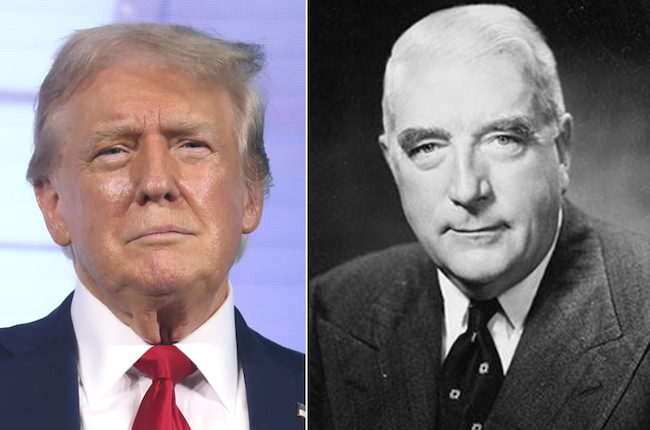The Liberal Party’s Future: Between Trump’s Populism and Menzies’ Legacy
The Liberal Party’s future appears caught between two powerful but contrasting political legacies — the brash, divisive populism of Donald Trump and the pragmatic, stabilising influence of Robert Menzies. Their struggle with internal alignment, as shown in their tense alliance talks with the Nationals and superficial talk of modernisation, reveals a party uncertain of its future but not entirely without hope.
The Allure and Danger of Trumpism
In the shadow of Trump, some Australian Liberals see a model worth emulating. Reactionary politics has proven effective, at least short-term, and Australia’s own “No” campaign against the Voice referendum seemed to mimic such hardline approaches. “The Liberals trooped their loyal followers over to the ‘No’ camp… and had a ‘win’ in the 2023 Voice Referendum.” Though this tactic succeeded in that moment, it lacked longevity. The general election that followed showed many Australians turned back toward Labor, swayed by blue-collar appeals and a desire for unity over division.
Donald Trump’s playbook is not without appeal: anti-migrant rhetoric, climate denial, and fear-based populism have proven potent tools. But the price is high. His actions, such as abrogating migrant rights and imprisoning them to fan applause from his rougher followers, have caused international alarm. As Dr Lee Duffield warns, “Trump is incompetent and making a mess, but would still be competitive electorally, because of this hate factor.” The fear is that this brand of politics, attractive in its simplicity and aggression, is also reckless, dishonest, and potentially dangerous.
Trumpism as Economic Regression
In Trumpism, there’s a familiar call to reject change and embrace radical deregulation. This mirrors 1970s neo-liberalism from the U.S., which revived outdated free-market ideologies stripped of humanity. It idealises “small government” and deregulation, resulting in a descent into oligarchy — government by and for billionaires, not citizens. Though lucrative for some, even the most gullible are beginning to smell the rot.
The Menzies Model: Stability, Strategy, and Social Balance
Contrast this with Bob Menzies’ Liberal Party — a centrist force that balanced business interests with national stability. Menzies built his success on two strategies: being moderately liberal while occasionally “getting dirty.” He “kept in check and marginalised some of the country’s bitterest reactionaries,” maintaining a semblance of stability and progressiveness within his party.
He also saw how demographics were shifting. Rising prosperity, especially among Catholic Australians, opened the door to realignment away from Labor. Menzies “played up to Cold War anti-communism,” exploiting fears through incidents like the Petrov affair. While these scare campaigns bordered on dangerous, they effectively fractured Labor’s base, handing the Liberals a critical edge for over a decade.
Menzies’ version of the Liberal Party — one that offered “good government” — rested on integrity and social compromise. His era brought a classless society vision, a mixed economy, and attention to individual rights and the rule of law. Prosperity allowed space for generosity toward workers, and “the government could be nice guys.”
The Opportunism Within Conservatism
And yet, Menzies wasn’t above exploiting racial fear when it suited him. Just before retirement, he supported Vietnam conscription and invoked the “Yellow Peril,” which helped engineer a strong election victory for Harold Holt. Even Menzies’ brand of conservatism wasn’t free from opportunism.
Crossroads and Consequences
Today, the Liberal Party faces a crossroads. Menzies’ “benevolent conservative” model aligns better with Australia’s evolving social fabric, particularly its educated, progressive middle class. The abandonment of the party by middle-class women and independent candidates signals a growing disconnection from hard-right values.
Dr Lee Duffield puts it best: “Maybe a ‘liberal’ Liberal Party can be got up out of the ashes, as in 1949.” Whether that revival can resist the reactionary sugar hits of populism or withstand internal pressure from the Nationals and far-right elements remains uncertain.
Will the Liberals choose to resurrect an inclusive, centrist vision rooted in Australia’s future, or regress to ideological nostalgia guided by the politics of fear? That decision could determine the direction of the nation’s democracy in the coming decades.






